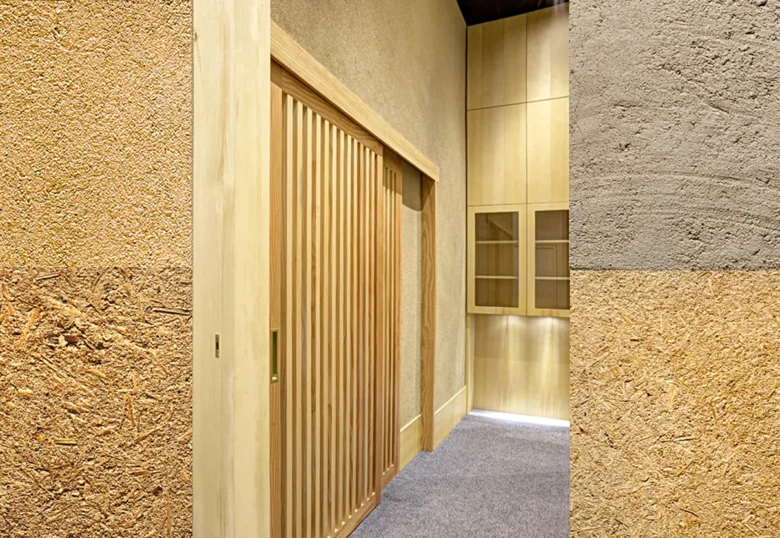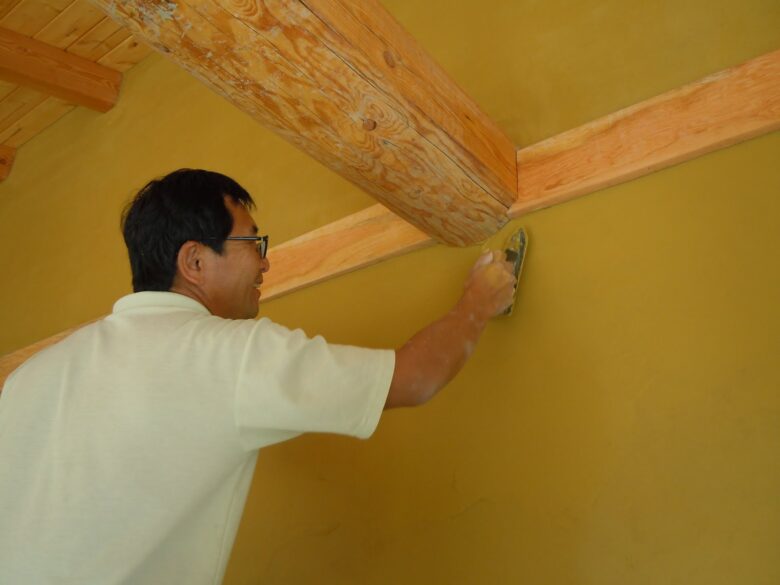Transforming your living space into something calming and unique doesn’t require massive budgets or complicated tools. The Japanese approach, with its connection to nature, minimalism, and balance, provides a beautiful way to bring life and harmony into your home. I recently worked on a project to update a bedroom using Japanese plaster, and the results were nothing short of breathtaking.
For anyone picturing a stylish home upgrade with a natural and earthy vibe, Japanese plaster, or “㼆喰” (shikkui), offers the best choice. It supports sustainability, adapts easily to various designs, and brings a calming atmosphere to any space.
You can update your living space without exceeding your budget or requiring expert skills by exploring genuine Japanese plaster solutions at Lohas Wall. Their products, crafted from natural materials, offer a way to transform walls while creating a healthier home environment without relying on toxic adhesives.
Contents
Key Points
- Prepare your space with the right tools and a clean foundation.
- Japanese plaster is a natural, eco-friendly material ideal for interiors.
- Application involves basic tools and careful layering for a smooth finish.
- Combining traditional materials with modern furniture creates harmony.
- Maintenance is simple and keeps the finish beautiful for years.
Setting the Stage for Transformation
When starting this kind of home update, preparation is everything. I cleared out my bedroom entirely, giving myself a blank canvas to work on. The walls were cleaned thoroughly to ensure nothing interfered with the application of the plaster.
Next, I gathered tools—a trowel, mixing bucket, and a smooth spatula. You don’t need anything fancy, but sturdy, reliable tools will make the process easier.
The Beauty of Japanese Plaster

Source: clay-works.com
Japanese plaster is unlike standard materials. It is natural, breathable, and has antimicrobial properties. It adds a rich texture that reflects light softly, creating a tranquil environment. Its eco-friendly nature was a big factor in my decision. Using it gave me confidence that I was not only updating my space but also keeping it safe and sustainable.
The versatility of Japanese plaster also stands out. Whether you want a sleek modern look or something more rustic, it adapts beautifully. The fact that it’s made with lime and natural pigments means you can customize the color to suit your taste.
Application Process
Applying Japanese plaster takes patience but not extraordinary skill. I started with small sections of the wall, spreading the material evenly with my trowel. The first layer acts as a base, which I allowed to dry completely before applying the second layer. This ensured the surface stayed smooth and uniform.
Humidity and drying time are crucial to the outcome. I worked during dry weather, ensuring no moisture would interfere with the finish. The second layer gave the walls a velvety texture, capturing the essence of natural beauty that I was after.
Designing Around the Natural Look
Once the walls were done, the next step was to complement them with thoughtful decor. Japanese aesthetics call for simplicity and functionality. I chose furniture with clean lines and incorporated natural elements like wooden frames, soft linen curtains, and a bamboo rug.
Lighting also plays an important role in creating the right ambiance. Warm, soft lights brought out the earthy tones of the walls, making the space inviting and serene.
Maintenance Tips for Longevity
One of the advantages of Japanese plaster is its low-maintenance nature. Regular dusting with a soft cloth is all you need to keep it looking fresh. If minor cracks appear over time, they can be patched easily without affecting the overall look.
Humidity control is another key factor. Using a dehumidifier or keeping the space well-ventilated ensures the material stays durable for years.
The Result
When the project was complete, I stood back and admired how the room had transformed. The space felt open, peaceful, and balanced. Every element worked together to create a relaxing retreat. The combination of natural materials and minimalist design brought a sense of calm I hadn’t experienced before.
If you’re looking to update your living space with something timeless and sustainable, Japanese plaster is an excellent choice. It offers beauty, functionality, and a connection to nature that is hard to match.
A Simple Step-by-Step Guide
Here’s a straightforward outline to follow for your project:
- Clear Your Space – Empty the room and clean the walls thoroughly.
- Prepare Materials – Get a trowel, mixing bucket, and smoothing tools.
- Mix the Plaster – Follow the manufacturer’s instructions carefully.
- Apply the First Layer – Work section by section and let it dry fully.
- Add the Final Layer – Smooth it evenly for a velvety texture.
- Decorate Thoughtfully – Use natural furniture and soft lighting.
- Maintain Regularly – Dust and patch small cracks as needed.
Why Choose Japanese Plaster?

The beauty of this material lies in its ability to adapt and its eco-friendly nature. It creates a surface that breathes, preventing moisture buildup and ensuring longevity. The result is a living space that feels alive and inviting.
Benefits of Japanese Plaster
- Breathability: Shikkui allows walls to “breathe,” regulating moisture and reducing the risk of mold or mildew.
- Antimicrobial Properties: Its lime-based composition naturally resists bacteria and viruses, promoting a healthier indoor environment.
- Aesthetic Appeal: The finish has a soft, velvety texture that enhances light reflection, creating a warm and calming atmosphere.
- Customizable Colors: Natural pigments offer a wide range of shades, allowing for personalized designs without the use of synthetic paints.
- Durability: When applied correctly, it forms a robust surface resistant to cracks and scratches.
Whether you’re a seasoned DIY enthusiast or trying something new, working with Japanese plaster is a rewarding experience. It gives you control over the final look and connects you with the space you’re transforming.
Final Thoughts
Transforming your living area doesn’t have to involve complicated processes or expensive solutions. Japanese plaster provides a natural, elegant, and sustainable option that delivers stunning results. By combining traditional materials with simple design principles, you can create a space that feels warm and peaceful, reflecting the beauty of the natural world right in your home.
Take that first step and enjoy the satisfaction of crafting a space that feels truly yours.
